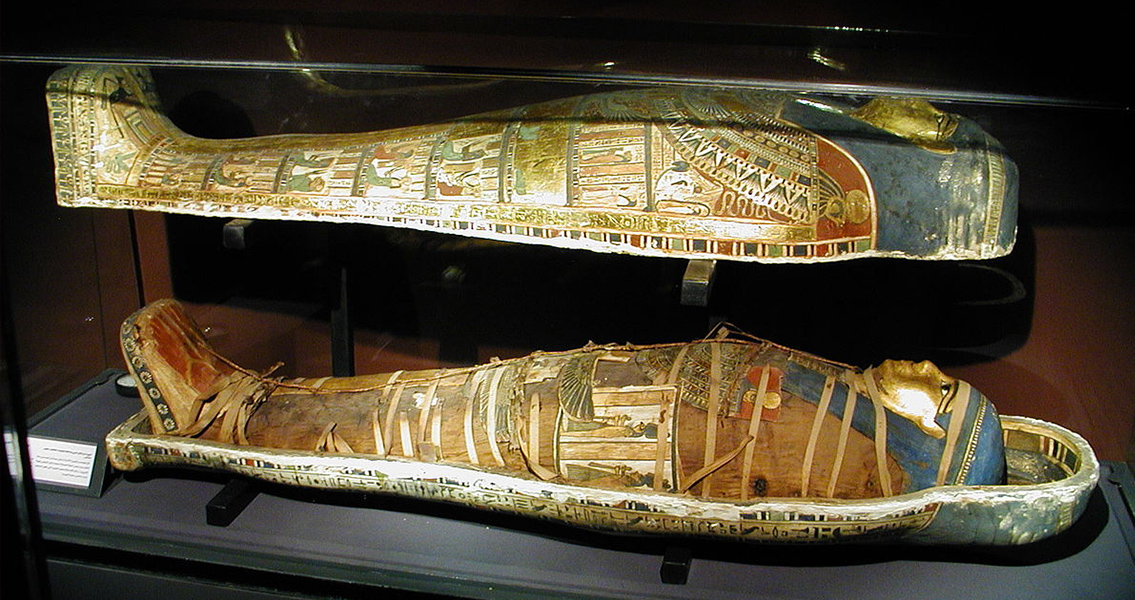<![CDATA[Last week an archaeological team working in Egypt announced the discovery of a mass cemetery they believed could contain over a million bodies. The excavation has since been buried in controversy, halting work at the site. Archaeologists from the Brigham Young University (BYU) in Utah have been excavating at the Fag el-Gamous site, and a nearby pyramid, since the 1980s. The massive dig was initially a collaboration with the University of California Berkley, who have since withdrawn their involvement. According to archaeologists from BYU, the bodies date from between the first century and seventh century CE, a time when Egypt spent long periods controlled by the Roman and Byzantine Empires. The team have already excavated 1,700 bodies from a cemetery site that is unusual in both its size, and the density of bodies left there. The site spreads out over 300 acres. Excavation Project Director Kerry Muhlestein told LiveScience that an excavation of a five metre squared area roughly two metres deep would typically yield around forty bodies. Based on the number of bodies already found, Muhlestein has estimated how many bodies could be in the grave. He told KSL; "The cemetery is very large, and so far seems to maintain that kind of burial density throughout. Thus the math suggests that there are over a million mummies in the cemetery" Normally, when the excavation of an Egyptian tomb is covered by the press, it is because it had belonged to a king or person of extreme wealth, buried with a host of luxurious 'grave goods'. In this instance however, the discovery is so important as it shows the fate of 'common people', buried in a mass grave. Last month, Muhlestein presented the team's findings at a colloquium of the Society for the Study of Egyptian Antiquities Scholars in Toronto. He revealed that one body excavated before he had been appointed director of the project was of a man who was over seven feet tall. In order to fit him into the burial shaft, his body had to be folded in half. This discovery is surprising, a seven feet tall man is unusual nowadays, but it would have been even rarer in ancient Egypt, due to people's poor diet and nutrition making the average height much lower. Now, the archaeologists are trying to understand how so many bodies came to be buried in the mass grave. The closest village to the site appears far too small to have provided the enormous number. The nearest large town, Philadelphia, although within a reasonable distance of the site, had cemeteries of its own. Unfortunately, a dispute with Egypt's Ministry of Antiquities could jeopardise the teams future involvement at the site. The 'Million Mummy Grave' story was widely circulated in various media outlets last week, including mainstream newspapers such as the Daily Mail in the UK. The wording of the announcement seems to be the route of the dispute, with the Luxor Times reporting it was enough for the ministry to tell the archaeologists to stop work at the site. As Dr. Youssef Khalifa, head of the ministry's ancient Egyptian department told the Luxor Times; "There are no million mummies, a mummy definition to begin with means a complete mummified body and there is only one mummy found at the site of Fag El Gamous in 1980 which is at the Egyptian museum since then." Muhlestein himself admitted in an interview with LiveScience last week that he had been reluctant to term the bodies as mummies. Nevertheless, the term has been used, and the Ministry of Antiquities seems to have decided the dispute over what constitutes a mummy is enough to stop excavations at the site. Muhlestein told the Luxor Times that he hopes he can resolve the misunderstanding. Local farmers are starting to encroach on the site, to expand their cultivable lands, meaning time is of the essence to glean as much information as possible from the unique cemetery at Fag el-Gamous. Image Credit: Gérard Ducher]]>
Dispute Over Egyptian 'Million Mummy Grave'
